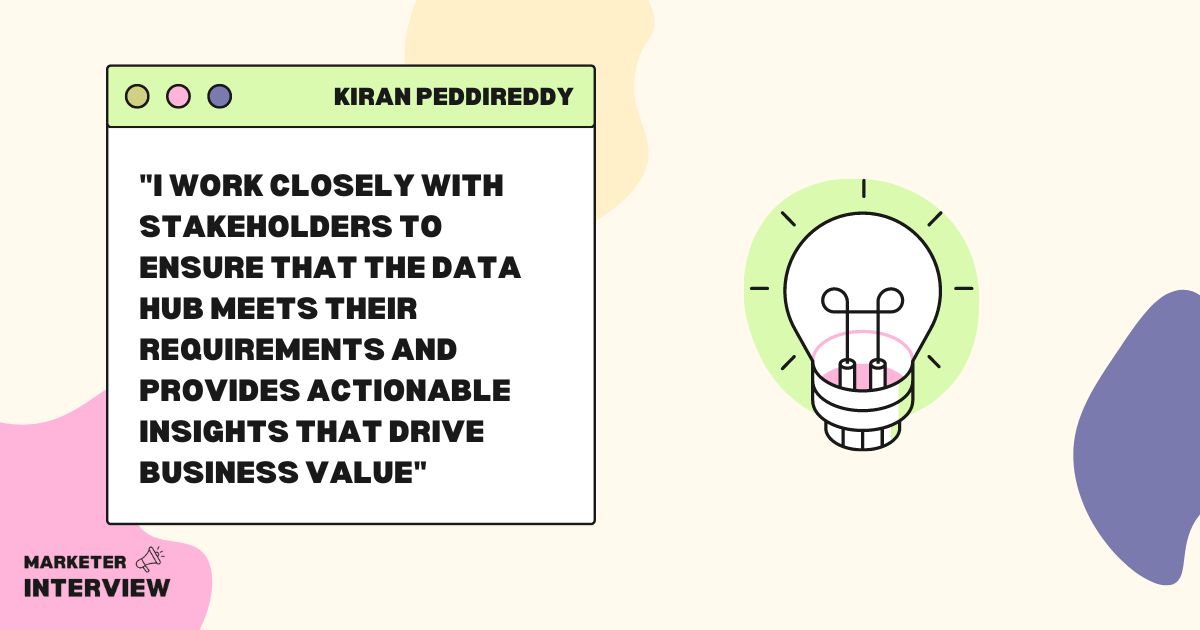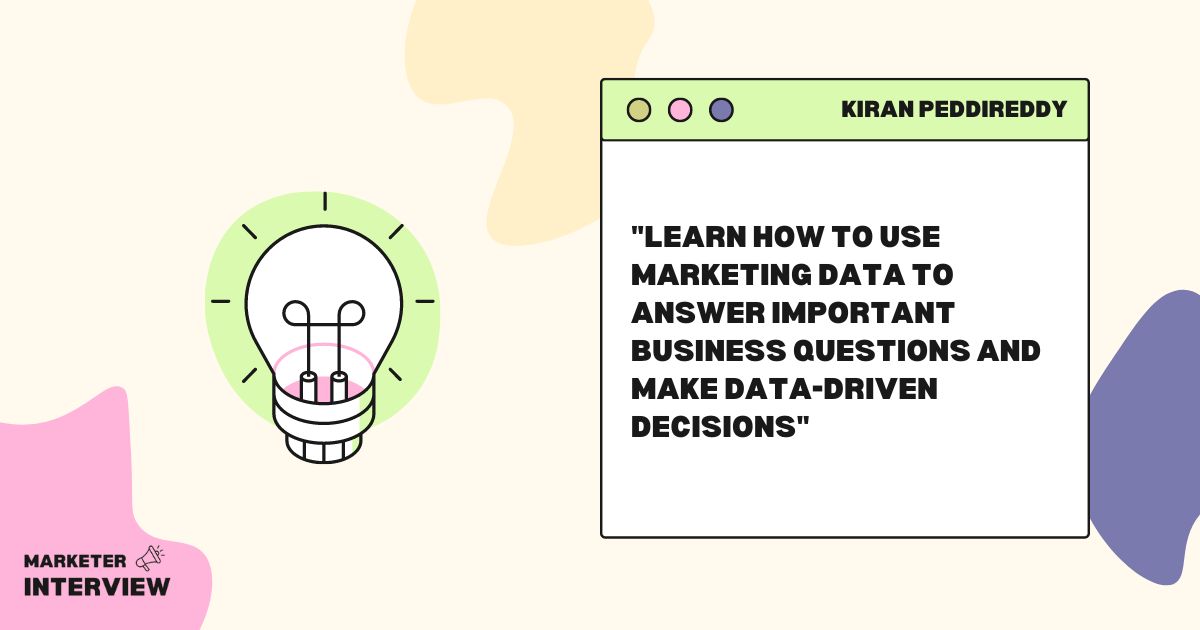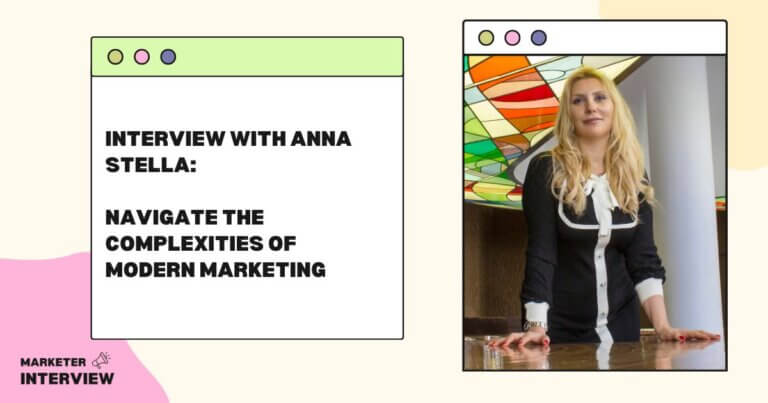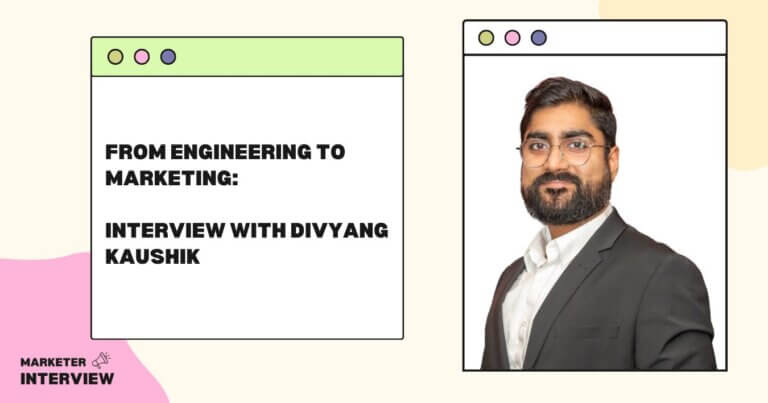Data-Driven Solutions to Marketing Challenges: An Interview with Kiran Peddireddy
Today, we have the pleasure of interviewing Kiran Peddireddy, a senior systems engineer and data engineer SME specializing in marketing data and providing data-driven solutions to pressing business challenges in data integration and analysis domains.
Kiran is passionate about assisting clients on their path toward digital transformation by optimizing and simplifying their data integration and analytics infrastructure.
With his expertise in cloud infrastructure, migration, automation, and process streamlining, Kiran has developed a centralized and global data hub that caters to local and global business requirements.
Let’s learn more about Kiran’s journey and insights into marketing data.
Contents
- 1 How did you get into Data Engineering, and what drew you to specialize?
- 2 Can you tell us about a project you worked on that involved collecting and analyzing CRM data for a client?
- 3 How do you approach developing a centralized and global data hub for clients with local and global business requirements?
- 4 What are some common challenges you face when working with marketing data?
- 5 How do you stay current with the latest trends and technologies in data engineering and analytics?
- 6 Can you walk us through your process for identifying and addressing data quality issues in marketing data?
- 7 How do you balance data privacy and security with the desire to collect and use as much data as possible for marketing purposes?
- 8 What advice would you give someone just starting in marketing data?
- 9 What tools and software do you use to collect, store, and analyze marketing data?
- 10 Can you share an example of how you’ve used agile methodologies and sprint planning to manage a marketing data project for a client?
How did you get into Data Engineering, and what drew you to specialize?
I got into data engineering as a technical lead at Pratt and Whitney. While working on product design and development, I realized the importance of data in making informed decisions and improving processes. This led me to explore data engineering, and I was fascinated by how data could be collected, processed, and analyzed to generate insights and drive business decisions.
Can you tell us about a project you worked on that involved collecting and analyzing CRM data for a client?
I worked on a project for a client where I collected and analyzed CRM data to improve their sales process.
I used Salesforce as their CRM platform and extracted data using ETL. Then, I used ETL and TIBCO EAI to clean and transform the data and BI for data visualization.
By analyzing the data, we identified key factors that contributed to successful sales and adjusted the sales strategy accordingly. The project resulted in an increase in the number of qualified leads and improved conversion rates.
How do you approach developing a centralized and global data hub for clients with local and global business requirements?
I take a structured approach that involves understanding the client’s specific needs and objectives, identifying and prioritizing data sources, designing and implementing a scalable data architecture, and developing robust data governance and management processes.
I work closely with stakeholders to ensure the data hub meets their requirements and provides actionable insights that drive business value. Additionally, I ensure that the data hub complies with relevant regulations and industry standards and can seamlessly integrate with other systems and applications.

What are some common challenges you face when working with marketing data?
Some common challenges when working with marketing data include incomplete or inaccurate data, data silos, and changing data sources.
To overcome these challenges, I use data cleaning techniques to ensure accuracy, work to integrate data from multiple sources to eliminate silos and stay up to date on changes in data sources to ensure data consistency.
Additionally, I often work with cross-functional teams to identify the most relevant data for specific marketing goals and develop strategies to optimize data usage.
How do you stay current with the latest trends and technologies in data engineering and analytics?
I attend various conferences, such as the Data Engineering Summit, to stay up-to-date with the latest trends and technologies in data engineering and analytics.
I follow industry publications and review reports by leading research firms like Gartner and Forrester. In addition, I am an active member of several industry groups and user communities, where I network with other professionals and stay abreast of the latest developments.
Can you walk us through your process for identifying and addressing data quality issues in marketing data?
First, I thoroughly analyze the data to identify any patterns or inconsistencies.
Then, I work with the client to determine the root cause of the issue and develop a plan to address it. This may involve implementing data cleansing techniques, such as data profiling or standardization, or adjusting data collection processes to ensure higher quality data going forward.
Finally, I monitor the data over time to ensure the quality remains high and make adjustments as necessary.
How do you balance data privacy and security with the desire to collect and use as much data as possible for marketing purposes?
To balance these needs, I follow the necessary data protection regulations and implement proper security measures to protect sensitive data.
What advice would you give someone just starting in marketing data?
I recommend starting by learning the basics of data analytics and statistics. Then, understand the different data types and how they can be collected, processed, and analyzed.
Next, focus on learning about the marketing industry and its challenges and opportunities. Then, learn how to use marketing data to answer critical business questions and make data-driven decisions.

What tools and software do you use to collect, store, and analyze marketing data?
My tools and software vary depending on the client’s needs and preferences. However, some commonly used tools in the industry include:
- CRM platforms such as Salesforce and HubSpot collect and manage customer data.
- Data warehouses such as Amazon Redshift and Snowflake,
- ETL (Extract, Transform, Load) tools such as Informatica, Apache Airflow, and Talend for moving data between systems and performing transformations.
- Business intelligence and analytics tools such as Tableau, SAS, and Power BI for analyzing and visualizing data.
- Programming languages such as Python and R for data analysis.
The project would be divided into smaller tasks such as data collection, cleaning, analysis, dashboard design, and development to create a dashboard for tracking a client’s marketing campaign.
Tasks would be prioritized and planned as sprints, typically 1-2 week cycles, with daily stand-up meetings for progress updates and adjustments.
Each sprint would end with presenting results to the client for feedback and incorporation into the next sprint.
Agile methodologies and sprint planning enable collaborative work, prioritization, and timely iterative value delivery while allowing for flexibility and adaptation to changes.






